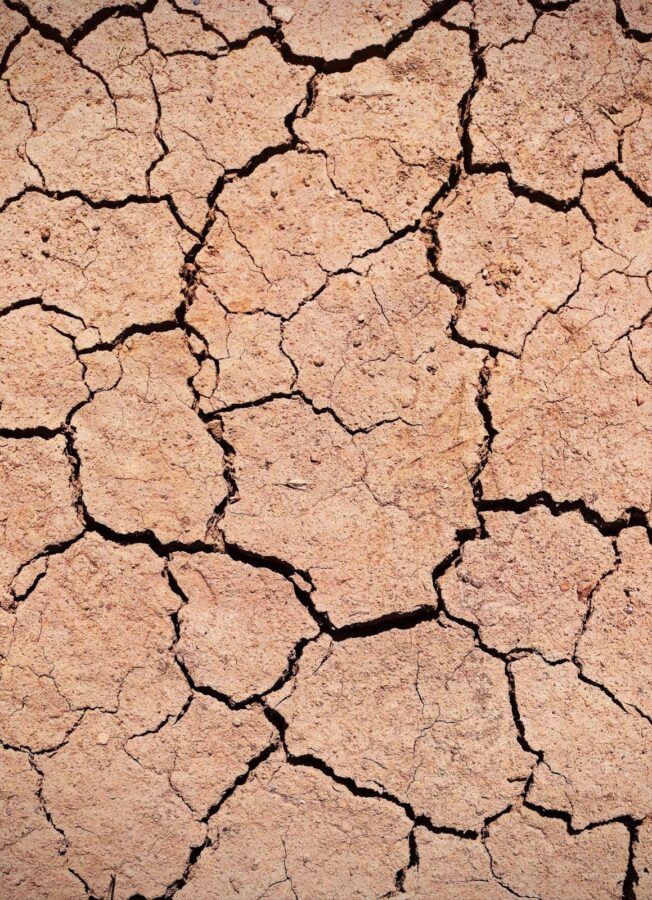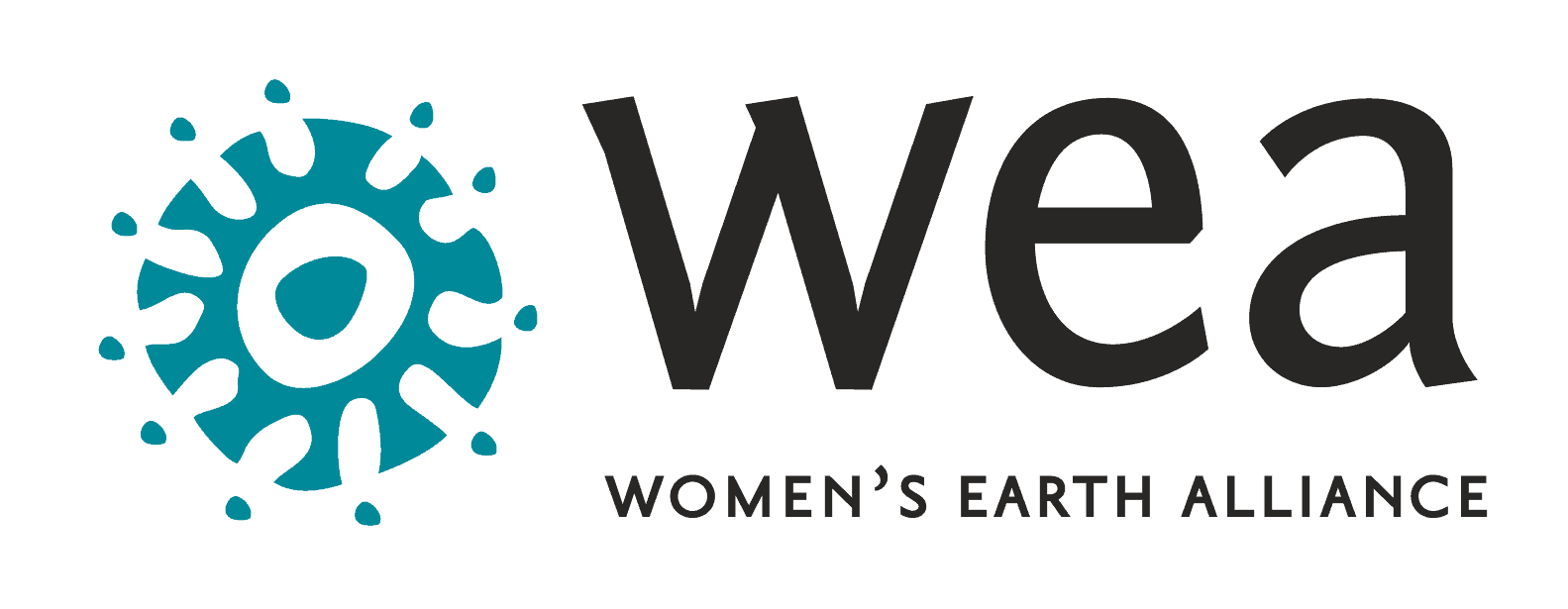Unraveling the Polycrisis: Women, Climate Change, and Geopolitical Conflict
Geopolitical conflict and climate change are among the most urgent crises of our time. Yet, the intricate ways these crises intersect—particularly along gendered lines—remains critically underexplored.
by Emilia Santos Thomas, WEA Communications Intern
Women disproportionately experience the impacts of both climate change and geopolitical conflict. For example, 80% of people displaced by climate change are women. At the same time, a recent UN report found that the number of women killed in armed conflict doubled to 40% in 2023—a troubling increase over recent years.
As climate change accelerates, it intensifies resource scarcity and instability, disproportionately affecting women and heightening their vulnerability. This instability can fuel conflict, which further compounds the harm women already face. In turn, conflict erodes community safety and environmental resilience, deepening the unique challenges women experience and increasing the risks to their health, safety, and livelihoods.
Together, these forces intertwine, creating a deadly knot of geopolitical conflict, climate and gender inequality, trapping women within a complex polycrisis.

Conflict and Climate Change
Geopolitical conflicts and war are deeply intertwined with environmental destruction. The concept of ecocide—intentional and unlawful acts that cause long-term environmental damage—was first developed to describe the devastation caused by Agent Orange during the Vietnam War. In the 50 years since, war’s destructive impact on the environment has only intensified.
Ecocide often unfolds silently alongside intense human suffering, as seen in the occupation and war in Palestine. Since October 2023, Gaza’s ecosystem has faced severe devastation. Despite the ongoing conflict, Palestine once had a functioning agricultural sector, yet 60% of its farmland has now been destroyed during hostilities. In the first 60 days of the current conflict, military actions released an estimated 281,000 metric tons of carbon and generated 39 million tons of debris. This contamination has polluted Gaza’s air, water, and land with hazardous chemicals, threatening the health and safety of Palestinians already living in an active war zone. The conflict has caused potentially irreversible damage to Gaza’s ecosystem.
The connection between conflict and the environment goes beyond direct environmental destruction. In today's geopolitical landscape, climate change and extreme weather events—such as drought, wildfires, and floods—can act as both catalysts and intensifiers of conflict, especially in regions where access to resources is already limited. In climate-vulnerable communities, these crises intersect, increasing the risk of violence and instability.
This dynamic is especially evident in Sudan. Years of prolonged drought have weakened the country’s economic resilience, particularly in rural areas, and strained access to food and water resources. This resource scarcity was a key driver of the 2023 conflict between the Sudan Armed Forces (SAF) and the Rapid Support Forces (RSF). The war has further devastated rural areas, displaced millions, and intensified competition for dwindling resources. Sudan illustrates how climate change and political instability reveal the brutal interconnections between ecological systems and human vulnerability.
Gendered Aspects of Conflict and Climate Change

The consequences of conflict and climate change are experienced differently, and often more severely, by women. Intersecting systems of oppression—patriarchal social structures, resource scarcity, and systemic violence—converge to create uniquely precarious experiences for women navigating war, climate crises, and displacement.
In many regions, women are responsible for collecting essential resources like water, food, and fuel. In conflict zones, especially where natural resources are already scarce due to climate change, this responsibility often requires women to travel longer distances through dangerous areas, exposing them to increased risks of gender-based violence and harassment. In Sudan, for example, prolonged drought has made resources even scarcer, while persistent conflict and economic decline have undermined communities’ resilience and capacity to cope with these environmental challenges.
As a result, Sudanese women are experiencing heightened rates of gender-based violence while seeking the resources their families depend on. These pressures to provide while resources dwindle have also led to more girls being withdrawn from school and a rise in child marriages.
When conflict and climate crises converge, entire communities are displaced in search of safety and resources. As of June 2024, 60 million people worldwide were forcibly displaced due to the combined impacts of climate hazards and conflict. Displacement, however, is not a uniform experience; it is a complex terrain that creates specific risks to women’s health and safety.
In Gaza, for example, the ongoing war has destroyed medical infrastructure and displaced countless women, severely restricting their access to reproductive healthcare — a crisis UN Women has described as “a war on women’s health.” As the conflict forces Palestinian women to flee, the destruction of hospitals and medical aid blockades have severed maternal and reproductive care for more than 500,000 women. These unsafe living conditions worsen women’s health vulnerabilities, particularly for those serving as caregivers. Additionally, restrictions and control of water resources compounds these challenges, forcing displaced women to rely on contaminated water sources and exposing approximately 117,000 Palestinian women to life-threatening diseases.
This pattern is also seen in Sudan, where 54% of the 11 million internally displaced people are women. Sexual violence has been weaponized during the conflict, particularly targeting displaced women and girls. And the destruction of healthcare infrastructure has left survivors without access to post-rape emergency care or psychosocial support.
When compounded by climate change and conflict, economic strain and resource scarcity can also disproportionately increase women’s dependency and vulnerability. In Ukraine, women make up the majority of internally displaced people, with 52% of displaced women reporting negative impacts on their employment due to the war. The conscription of men has led to a rise in female-headed households, exacerbating existing economic vulnerabilities. Even before the war, 37.5% of female-headed households faced food insecurity compared to 20.5% of male-headed households. The conflict has intensified women’s unpaid care and domestic work as they support displaced family members.
Across these crisis zones, a critical pattern emerges: gender is a fundamental lens through which to analyze the interconnected crises of conflict and climate. From Syria’s drought to Gaza’s ongoing conflict, women’s bodies become battlegrounds where environmental, political, and patriarchal violence converge.
Investing in Women’s Climate Leadership is Critical
Despite being disproportionately impacted by the compounding crises of conflict and climate change, women’s leadership in peace negotiations remains extremely low — at just 16% globally. This underrepresentation means that gender-specific needs and experiences are rarely addressed in aid provisions or peace agreements. In Yemen’s ongoing civil war, for example, restrictions on women’s participation in peacebuilding and community health advocacy have compounded barriers to healthcare and clean water, worsening health outcomes and eroding community resilience.
A funding crisis further exacerbates these challenges, with a lack of funding being directed towards women-led organizations during conflict and crises. In 2023, only 0.09% of the UN Flash Appeal went directly to national or local women’s rights organizations addressing the gendered impacts of war.

Additionally, just 0.2% of global climate finance is directed toward women-led initiatives. As resource scarcity and conflict worsen with climate change, excluding women from decision-making threatens to deepen existing gender inequalities and slow progress toward sustainable solutions.
Sima Bahous, Executive Director of UN Women, aptly states: “Systemic, gendered crises require systemic, gendered solutions.” We cannot achieve peace or climate justice without gender justice.
To create a just, thriving, and peaceful world, we must recognize and respond to the interconnectedness of climate change, conflict, and gender-based violence. This involves ensuring women’s representation at all levels of decision-making, protecting their rights to health and safety, and supporting women-led grassroots solutions that build resilience in the face of intersecting crises. By addressing these challenges holistically, we can begin to unravel the complex web of the polycrisis and create a safer and healthier future for all.
